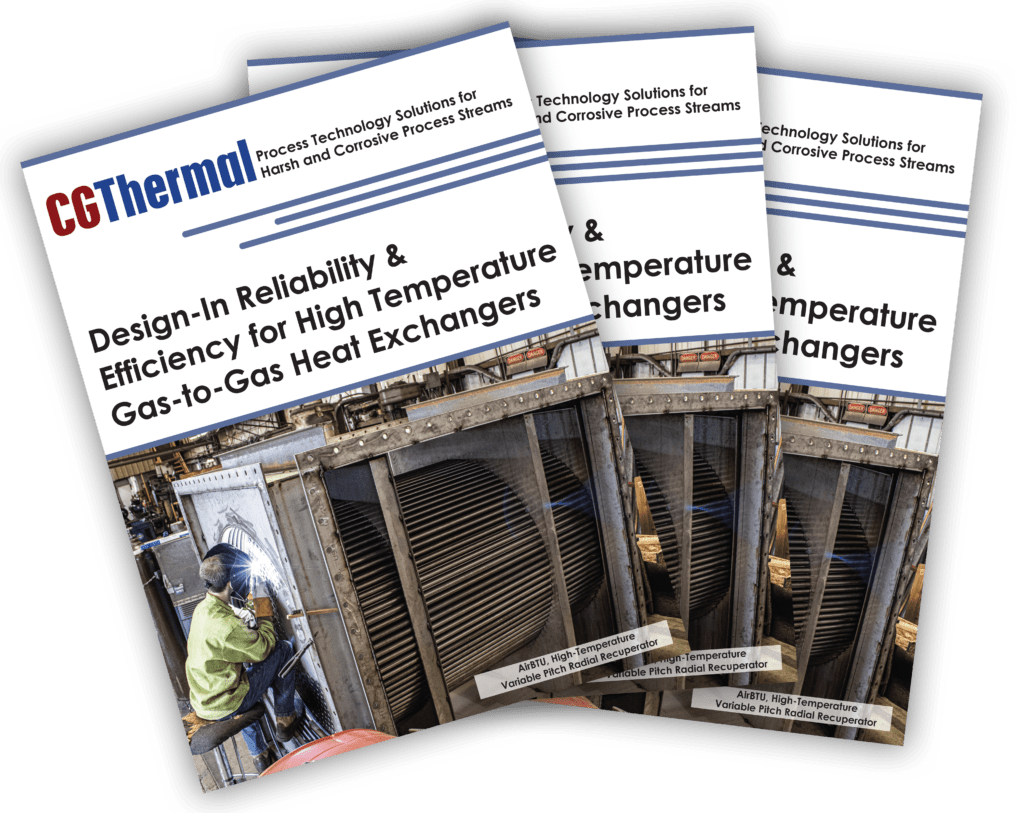There are several considerations when working with high-temperatures in a gas-to-gas recuperator. While certain design considerations are essential to a 20+ year operating life, choice of material is crucial to avoid high maintance costs and long maintance downtimes.
The maximum operating temperature as well as the gas composition, needs to be considered during material selection. The highest metal temperature, as determined through the CFD analysis, and the stream composition are the main criteria used in the determination of materials.
Material and fabrication costs, availability, and desired operating life are part of the equation as well when designing the optimal gas-to-gas recuperator.
Some of the alloys we commonly use in our heat exchangers include:
- 304L SS
- As a stainless steel alloy with more than 18% chromium and 8% nickel and less than 0.03% carbon, this material offers good corrosion resistance in many environments, from moderately reducing to moderately oxidizing. It is also strong and tough in cryogenic temperatures, easy to clean, and suitable for forming and welding operations.
- 304H SS
- Similar to 304L SS, this stainless steel alloy contains more than 18% chromium and 8% nickel. However, it has a minimum carbon content of 0.04%. It exhibits similar corrosion resistance but greater susceptibility to carbide precipitation in the HAZ during welding.
- 321 SS
- This stainless steel alloy is titanium-stabilized to make it suitable for use in temperatures ranging from 1,000 to 1,600° F. It readily accommodates use in welding operations.
- 309 SS
- This stainless steel alloy offers oxidation resistance up to 1,900° F in stable temperature conditions or 1,850° F in cycling temperature conditions. It also demonstrates good resistance to high-temperature sulfur-bearing atmospheres and moderate resistance to carbon-bearing atmospheres.
- 310 SS
- This stainless steel alloy has excellent resistance to corrosion in mild cycling temperature conditions up to 2,000° F. It also exhibits high strength and toughness in cryogenic temperatures, moderate strength in high temperatures, and good resistance in sulfur-bearing atmospheres.
- RA 253MA
- This stainless steel alloy was designed to combine good oxidation resistance with high strength and heat resistance. It also offers good resistance to high-temperature abrasion and sulfidation.
Conclusions
Outside of material, there are various considerations to take in design to address common failure modes like cold-end corrosion and fouling. Those issues and design considerations are addressed in this white paper. Click here or the button below to download “Design-In Reliability & Efficiency for High Temperature Gas-to-Gas Heat Exchangers.”

To learn more about CG Thermal’s AirBTU VPRR, click here.

